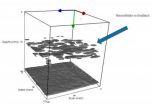(Press-News.org) The Guide aims to ensure high-quality assisted reproduction treatment as defined by the European Union criteria for good quality medical treatment and the ESHRE position paper on Good clinical treatment in Assisted Reproduction.
Although in principle foreign and local patients should be treated the same and with the best possible treatment, there is evidence that this is not always the case.
The Guide is based on the core principles in health care: 'equity', 'safety', 'efficiency', 'patient centeredness', 'timeliness' and 'effectiveness'. The principle of equity means that any difference between local and foreign patients should be justified, for instance the extra cost for a translator. Foreign donors should receive similar care to patients and local donors. No distinctions are to be made based on their origin and/or motivation. ESHRE recommends that national and foreign donors receive comparable compensation and that the recruitment criteria are the same.
According to the ESHRE Task Force on CBRC, the ideal is fair access to fertility treatment at home for all patients. However, often faced with no realistic alternatives due to legal restrictions, long waiting lists, lack of donors or unavailable or expensive treatments, patients travel across borders and may not receive adequate treatment in the country of their choice.
"Doctors should consider the principles of beneficence and non-maleficence together and aim at producing minimal risks with a maximum chance of pregnancy," says Dr. Françoise Shenfield, coordinator of the ESHRE Task Force. Here the group refers to the ESHRE position paper on 'Good Clinical Treatment in Assisted Reproduction'.
Treatments should abide by these rules. One example would be a restrictive embryo transfer policy to eliminate high order multiple gestations.
Patients should receive clear information about necessary tests, their costs and realistic waiting times; donors should receive a stimulation cycle that minimizes their health risk. In order to obtain information on repeated donations and to be able to verify legal restrictions on donations, ESHRE recommends the establishment of national registers of donors and for centers to participate in data registries.
"To prevent abuse of donors coming from abroad, intermediate agencies should be avoided, since this may lead to violations of the rules of good clinical practice and, in the worst case, to trafficking," says Dr. Françoise Shenfield.
Legal advice about local rules should be given to patients at home and abroad. Potential legal problems in their home country should be outlined to patients. The ESHRE Task Force recommends that clinics follow up on children conceived after treatment at home and abroad.
Collaboration between the home practitioner and the receiving clinic offers the best chance of optimal care for the patient. The principle of 'patient centeredness' includes adapting practical management to foreign patients. Counselling and psychological support should be available in a language understood by the patient. If this cannot be guaranteed, ESHRE recommends not treating the patient. This is important since the patients have to give proper consent. Clinics should provide patients with the details of their ombudsman or complaints department in order to give them the possibility to redress their grievances.
"Our recent study showed that an estimated 14.000 cycles of treatment are performed for infertile patients crossing borders in six European countries alone. The total number in Europe is therefore much higher. Together with collaborators such as egg donors or surrogates that also cross borders to provide reproductive treatment outside their home country, cross border care is a wide spread phenomenon, " says Dr. Françoise Shenfield. "ESHRE's Good Practice Guide for Cross Border Reproductive Care will provide guidance for clinics treating foreign patients and it will help regulators and policy makers to create a framework to enable centers to abide by these rules."
In 2011, the ESHRE Task Force aims to enroll as many signatures as possible to the Good Practice Guide from regulatory bodies, fertility societies and clinics. The International Federation of Fertility Societies has already agreed to it in principle. Further activities planned are data collection on unknown aspects of gametes donation and specifically oocyte donation across borders.
INFORMATION:
ESHRE Good Practice Guide for Cross Border Reproductive Care, published online in the journal Human Reproduction (20 April 2011): doi: 10.1093/humrep/der090
The full paper is available on request.
Shenfield, F., et al., Cross border reproductive care in six European countries. Human Reproduction 2010, 25(6): 1361-1368
Good Clinical Treatment in Assisted Reproduction: An ESHRE position paper (June 2008)
http://www.eshre.eu/page.aspx/942
Contact: Hanna Hanssen, Communications Manager ESHRE, Tel: + 32 (0)2 263 64 66, Mobile: +32 (0) 473 35 33 81, hanna@eshre.eu.
ESHRE was founded in 1985 with a mission is to promote the understanding of reproductive medicine. It does this through facilitating research and the dissemination of research data in human reproduction and embryology to the public, scientists, clinicians, patient associations and politicians across Europe. For more information visit the ESHRE website at www.eshre.eu.
END
In the future, when you walk into a doctor's surgery or hospital, you could be asked not just about your allergies and blood group, but also about your gut type. Scientists at the European Molecular Biology Laboratory (EMBL) in Heidelberg, Germany, and collaborators in the international MetaHIT consortium, have found that humans have 3 different gut types. The study, published today in Nature, also uncovers microbial genetic markers that are related to traits like age, gender and body-mass index. These bacterial genes could one day be used to help diagnose and predict outcomes ...
ALEPPO, SYRIA (20 April 2011): Researchers meeting at a scientific conference in Aleppo this week reported that aggressive new strains of wheat rust diseases – called stem rust and stripe rust – have decimated up to 40% of farmers' wheat fields in recent harvests. Areas affected are North Africa, the Middle East, Central Asia and the Caucuses, including Syria, Egypt, Yemen, Turkey, Iran, Uzbekistan, Morocco, Ethiopia, and Kenya.
“These epidemics increase the price of food and pose a real threat to rural livelihoods and regional food security,” said Mahmoud Solh, Director ...
Local extinction rates of American pikas have increased nearly five-fold in the last 10 years, and the rate at which the climate-sensitive species is moving up mountain slopes has increased 11-fold, since the 20th century, according to a study soon to be published in Global Change Biology. The research strongly suggests that the American pika's distribution throughout the Great Basin is changing at an increasingly rapid rate. The pika (Ochotona princeps), a small, hamster-looking animal sensitive to climate, occurs commonly in rocky talus slopes and lava flows throughout ...
Data from NASA's Cassini spacecraft have revealed that Enceladus, one of Saturn's diminutive moons, is linked to Saturn by powerful electrical currents - beams of electrons that flow back and forth between the planet and moon. The finding is part of a paper published in Nature today.
CAPS, one of the instruments on board Cassini which made the electron beam discovery, includes a electron sensor called CAPS-ELS – led by UCL (University College London).
Since Cassini's arrival at Saturn in 2004 it has passed 500km-wide Enceladus 14 times, gradually discovering more of ...
The nationwide economic recession has cost tens of thousands their jobs, forced millions into foreclosure and resulted in countless bankruptcy filings. Despite their best efforts, many people are falling behind on mortgage payments due to financial circumstances beyond their control. In an effort to avoid foreclosure, more and more people are seeking loan modifications as a way to lower payments temporarily (or permanently), making them more affordable and making keeping the home a real possibility.
Unfortunately, at a time when foreclosures are at a record high, unscrupulous ...
Researchers of Apoptosis and Cancer Group of the Bellvitge Biomedical Research Institute (IDIBELL) have found that a small molecule, Nutlin-3a, an antagonist of MDM2 protein, stimulates the signalling pathway of another protein, p53. By this way, it induces cell death and senescence (loss of proliferative capacity) in brain cancer, a fact that slows its growth. These results open the door for MDM2 agonists as new treatments for glioblastomas. The study has been published at the journal PLoS ONE.
Glioblastoma multiforme is the most common brain tumour in adults and the ...
In a multicellular organism, different cells fulfill a range of diversified functions. Often such specialization depends on the delivery of molecular goods to distinct places within a cell. It ensures that particular functions only occur at defined cellular sites. This establishment of intracellular asymmetry in the otherwise fluid environment of the cell cytoplasm requires active transport processes. Messenger RNAs (mRNA) represent an especially important type of freight. They are copies of genetic information stored in the nucleus. In the cytoplasm the information encoded ...
Expectant mothers are familiar with the procedure: the physician examines them with an ultrasound apparatus that displays lifelike images of the fetus on the monitor. The application of this technology has been customary in medicine for years; in materials testing though, it has been used only in relatively rudimentary form to date. Researchers at the Fraunhofer Institute for Non-Destructive Testing IZFP in Saarbrücken have adapted the conventional sonar procedure – a simple ultrasound method – and have succeeded in generating three-dimensional images with the aid of innovative ...
Prosecutors trust that the information they receive from crime labs is correct and accurate. The results from tests run at the lab are used to help build cases against those accused of crimes. When this information is inaccurate it can lead to questions for both past and future cases, and in some instances, lead to innocent people being convicted of crimes they did not commit. The Nassau County crime lab recently became the only police lab in the nation to completely close its doors due to its inability to follow procedures.
The lab's troubles started in December 2010. ...
It turns out to be difficult to find out exactly how much a child who cannot yet speak suffers after a surgical operation. Researchers at the University Hospital of La Paz, in Madrid, have validated the 'Llanto' scale, the first, and only, tool in Spanish which measures infant pain rapidly and simply.
"The lack of appropriate tools prevents health professionals from knowing if a pre-verbal child who cannot tell us how much a surgical wound hurts, is being treated correctly", explains Francisco Reinoso, lead author of the study and head of the section of Paediatric Anaesthesia ...



